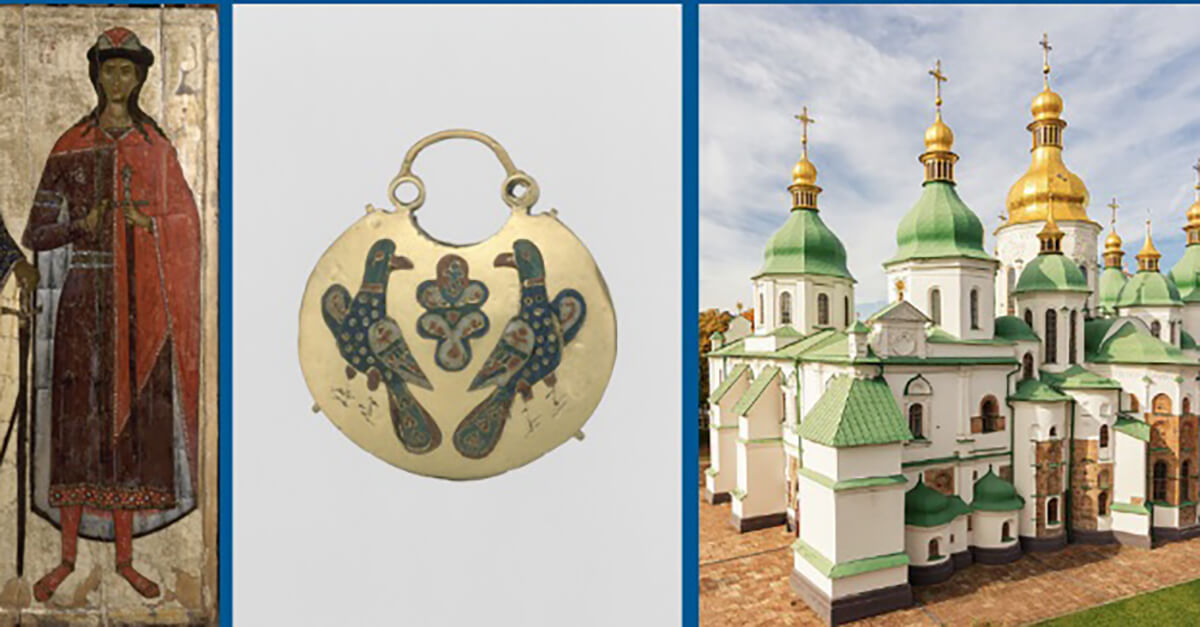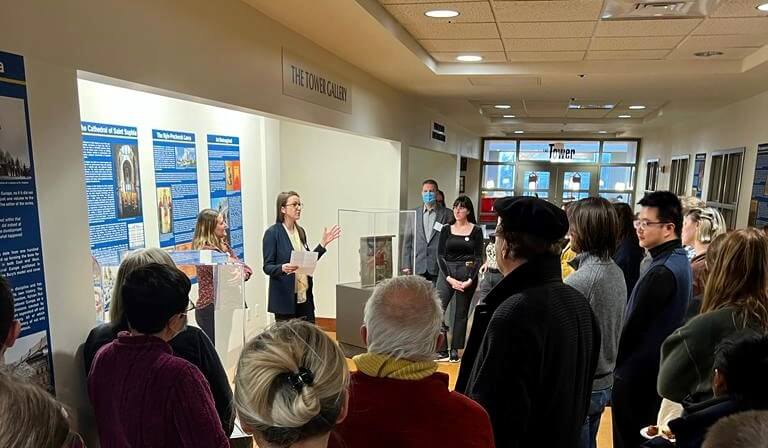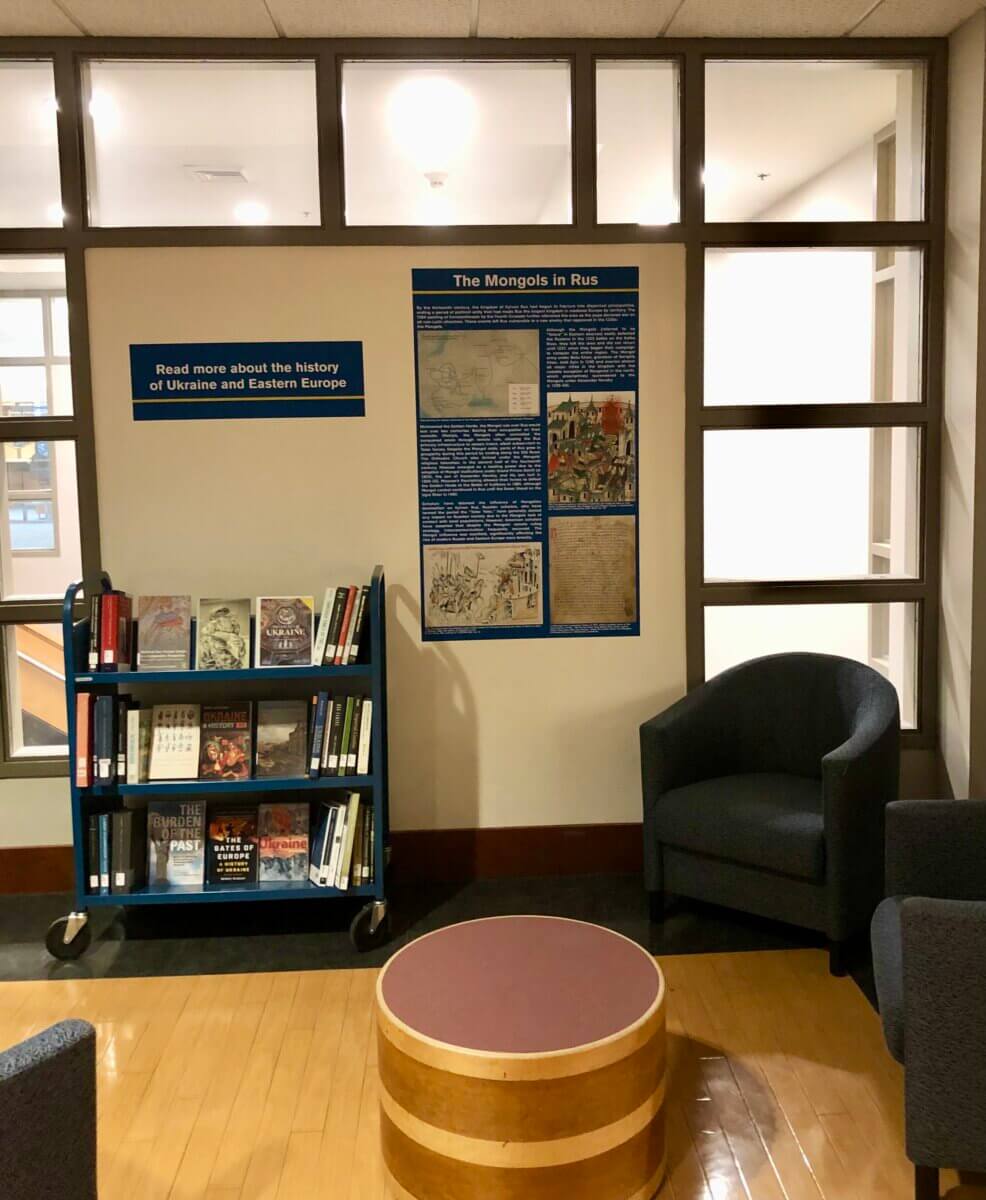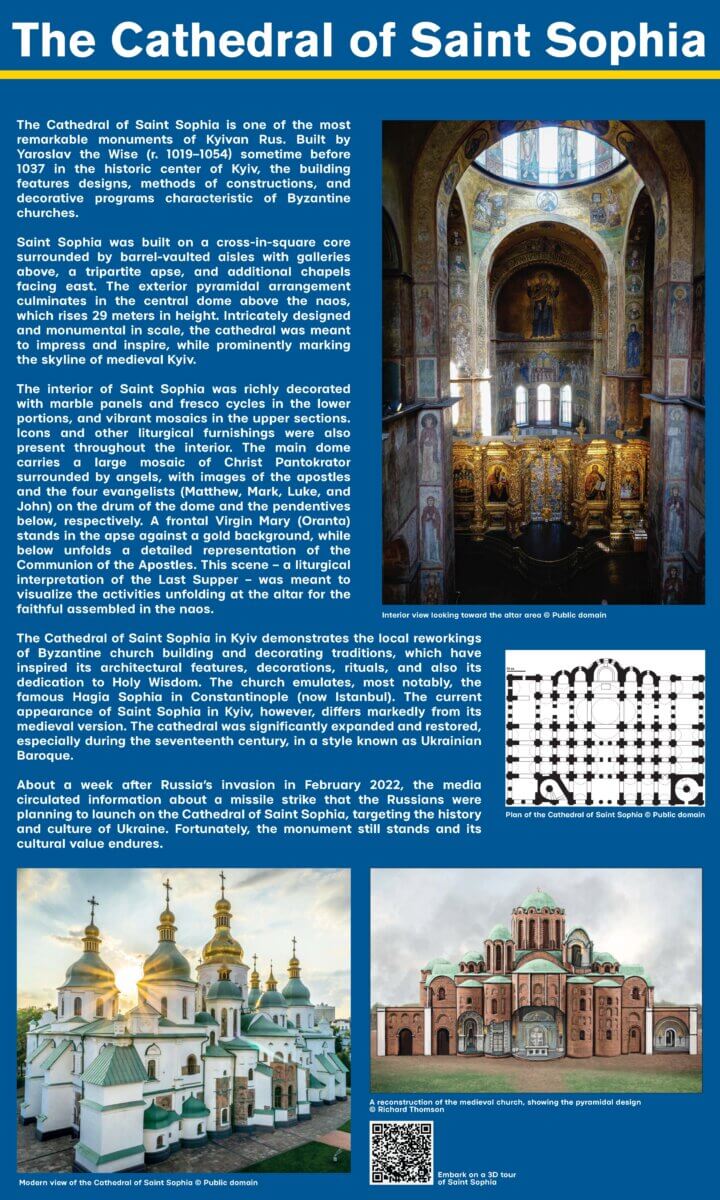
Ukraine: Connected Histories and Vibrant Cultures

A new exhibition at Tufts University reflects on the connected histories and vibrant cultures of modern Ukraine, which have been brought into the spotlight by Russia’s full-scale invasion on February 24, 2022. A year on, the devastating destruction to human life and local culture continues, but new efforts are underway to support Ukraine and put the history and heritage of the region on the map. I co-curated a new show on this topic, Ukraine: Connected Histories and Vibrant Cultures, with colleagues and students at Tufts. The exhibition is open for viewing in the lobby of Tisch Library on the Medford campus through the end of May 2023 and it brings some necessary historical perspective and weight to Ukraine’s cultural riches
During the Middle Ages, Ukraine was part of the largest kingdom geographically in medieval Europe, known as Kyivan Rus. Centered around the city of Kyiv—today the capital of Ukraine—Rus stretched from the Baltic Sea in the north to the Black Sea in the south and covered the territories of several modern countries, including Ukraine, Belarus, Russia, Poland, and Romania. Rus fostered political, diplomatic, economic, artistic, and religious contacts with Central and Western Europe, the Byzantine Empire, and other neighboring regions. The Mongols also played a key role in shaping Rus and its environs, with periods of intense conflicts, followed by negotiations and collaborations. The surviving textual, visual, and material evidence from the region of modern Ukraine—including the famed cathedral of Saint Sophia in Kyiv, the Kyiv-Pechersk Lavra, manuscripts, and icons—reveals that Rus was expansive, well-connected, and diverse.
Ukraine: Connected Histories and Vibrant Cultures is a panel exhibition that brings attention to the entangled and complex histories of Eastern Europe, especially the regions of modern Ukraine, highlighting for a broad audience key historical moments, events, and figures, as well as objects and monuments that are little known outside specialist circles and are now endangered by the current war, such as museums, landmarks, and Jewish monuments, to name a few. Featuring a timeline, maps, images and reconstruction of key monuments, and other textual and visual sources, the exhibition also addresses later transformations and manipulations of the historical and material record in order to advance certain narratives, especially during the Soviet era.

The twelve panels forming the exhibition look at aspects of the local history and artistic production through cultural contacts, highlighting the relations of Rus and Byzantium, the Mongols, and the West through diplomacy, trade, marriages, as well as economic, religious, and cultural angles. Several panels showcase the Jewish and Armenian heritage of the region, including the recent destruction of key sites such as the Drobytsky Yar memorial in Kharkiv, Ukraine. Finally, the project details recent efforts to document, study, and preserve the history and heritage of Ukraine and Kyivan Rus, including recorded lecture series, publications, and digital archiving projects.

To complement the research and presentation of the material on the individual panels, an area of the library has been reserved for a display of books about Ukraine and Eastern Europe available in Tufts library collections. Visitors can rest in a chair and immerse themselves in one of these volumes. The already rich collection of texts at the university has been supplemented by recent titles, including Treasures of Ukraine: A Nation’s Cultural Heritage—“a compelling account of Ukraine’s history, told through the prism of a carefully curated selection of key monuments, architectural landmarks, and works of art.” Proceeds from this publication go to PEN Ukraine to help Ukrainian authors in need and to museums in the region. The reading area also features complimentary copies of the second issue of the magazine, Medieval World: Culture & Conflict, dedicated to the kingdom of Kyivan Rus. (Full disclosure: I am its editor!)

Finally, the exhibition highlights the work of contemporary Ukrainian artists, Oleksandr Klymenko and Sofia Atlantova, specifically three icons painted on repurposed wooden ammunition boxes that are part of their larger project, Buy an Icon – Save a Life. This art initiative began after Russia’s 2014 invasion of eastern Ukraine and Crimea. As described on its website: “The main idea of the project is the transformation of death (symbolized by ammo boxes) into life (traditionally symbolized by icons in Ukrainian culture). What is important, this victory of life over death happens not only on the figurative and symbolic level but also in reality…” The icons were previously on display at the Museum of Russian Icons in Clinton, Massachusetts. The museum staff graciously facilitated the transfer and new installation of the icons at Tufts University.

Designed from the outset as a collaborative project between faculty, staff, as well as undergraduate and graduate students at Tufts University, including Ukrainian members of the community, this exhibition brings the history and cultural heritage of Ukraine and Eastern Europe to all, while continuing Tufts’s commitment to global learning.
Select features of this project are available on the exhibition website, which also details opportunities to bring this exhibition to other institutions. This project can be adapted in content and modes of display.
The connected histories and vibrant cultures of Ukraine and Eastern Europe have long been marginalized in scholarship and the popular imagination, despite efforts to globalize approaches, curricula, and collections. Ukraine: Connected Histories and Vibrant Cultures responds to the current crisis in Ukraine by bringing to the fore the history and heritage of the region. This project also encourages conversation about preservation and access efforts, as well as ways to expand the learning opportunities and conversations to include the complex histories and diverse visual cultures of Eastern Europe.

